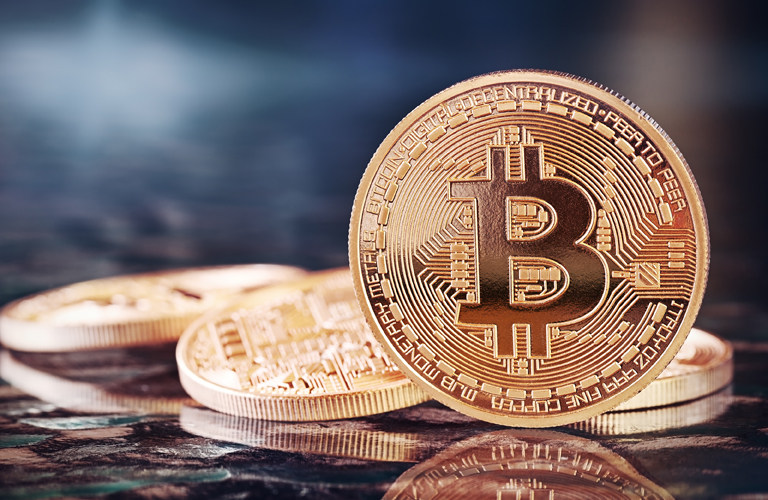Bitcoin (and other “cryptocurrencies”) have captured the world’s attention like few investment assets in history: It has become one of the greatest manias of all time. What is it? Is it for you? Those, and other important questions may have been on your mind. I hope to help answer them in this month’s Investor’s Edge.
For starters, what is a cryptocurrency? When you simply break it down into crypto + currency, you get hidden money. This is more often referred to as a private, decentralized digital currency. For discussion’s sake, I will default to Bitcoin when referring to crypto since it was the first created and is by far the biggest. There are now over 1,600 crypto’s. Consider “crypto” as more of a digital asset class than a currency. I prefer to consider Bitcoin as a speculative investment (digital asset class) than a currency like the dollar, euro, pound, etc. even though it is now used as such. Bitcoin is becoming increasingly popular for international payments. The prospect of a fast, secure, low cost and genuinely international payments system is encouraging businesses and individuals around the world to seriously consider cryptocurrency settlement. You can now pay your AT&T phone bill with Bitpay using Bitcoin. Or buy a Whopper at Burger King in Venezuela. For a few weeks earlier this year you could have bought a Tesla with Bitcoin – but no more. American Express advises business customers that a disadvantage of Bitcoin is that it is not yet widely accepted in many countries, and in some countries its use is illegal. Payment processors such as Bitpay, Paypal and Square let you make payments to merchants who accept it, but those merchants usually immediately convert the crypto received into dollars or the fiat currency where the merchant is domiciled. They don’t want the risk of Bitcoin’s value dropping dramatically. Whether viewed as a digital currency or asset class, crypto “coins” are created (“mined”) and ownership is recorded and stored in a ledger existing in a form of a computerized database using strong cryptography to secure transaction records. This technology is known as a blockchain.
As an asset class, like stocks and bonds, Bitcoin and other crypto’s are the newest investment class in the investment universe. The U.S. Commodity Futures Trading Commission (CFTC) determined Bitcoin a “virtual currency” commodity in 2015. It is here, in the investment realm, where I place Bitcoin. As a commodity, the digital asset class has experienced phenomenal price appreciation and inordinate volatility. One attribute of Bitcoin that makes it a unique commodity is its’ supply. The number of Bitcoins is finite; there are 21 million coins. There are about 19 million Bitcoins in circulation. Bitcoin was created in 2009 and valued at less than half a penny. It peaked this April at over $63,000. As I write this today, Bitcoin is bouncing off a low near $31,000. This is near where it was at last year-end. It opened 2020 at about $7,000. As I mentioned, it is volatile. Is it for you? Yes. No. Maybe? Only you can know. As an investment strategist, portfolio manager and wealth advisor, I can just remind you to be true to you as an investor. Know the parameters and constraints unique to you that govern how you invest – or speculate. Indeed, Bitcoin is a speculation.
When I hear about the crypto “miners,” I think of the “Niners” that speculated for gold, using picks and shovels mining for nuggets. Similar to the gold rush, Bitcoin speculation gives you a few ways to get involved, should you choose to. You could take the more conservative approach, selling the supplies (“picks and shovels”), or be a miner, or directly buy existing Bitcoin. Your risk/reward ratio differs with each. Here, for your information, are examples of securities you might consider with those approaches to Bitcoin in mind. Coinbase Global, Inc. (COIN) is essentially the Bitcoin exchange. The publicly traded security is the platform where crypto traders can buy and sell crypto assets. Think of it like the “house” or casino for gamblers. A miner is Riot Blockchain, Inc. (RIOT). This listed security is the largest Bitcoin mining company in North America. Then, as mentioned, you could buy Bitcoin directly either from Coinbase or buying shares of the Bitcoin “tracker” issued by Grayscale Bitcoin (GBTC). GBTC is a listed security like COIN and RIOT. Their shares trade on the stock exchange and are highly liquid. Lastly, and perhaps the most passive way to gain investment exposure to Bitcoin is through a mutual fund or ETF that holds it. The ARK Next Generation Internet ETF (ARKW) is one. It recently held about 8% of its assets in Bitcoin related securities.
Still asking yourself if Bitcoin is for you? Here’s a prudent consideration for most investors. Old fashioned asset class diversification. As noted above, Bitcoin’s price has increased incredibly since 2009. A relatively small amount of Bitcoin held in a traditional stock portfolio would have added great value. For example, a study showing various asset class returns over the trailing twelve months ending January 2021 shows the S&P 500 stock index gained 17.25%. Bitcoin soared 248.52% during that time. An investment portfolio that was diversified with just a 5% allocation to the Bitcoin asset class over the period jumped 22.19%. That’s almost 30% more than all stock portfolio.
Diversification has always been considered a wise investment style. Now we have another asset class to choose from.

Leave a Reply